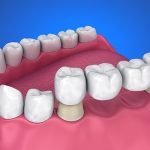There have been countless times that new patients were shocked when we asked them to extend their arms so we could take their blood pressure. Surprised looks were then followed with questions such as “Why is this necessary?” or “I’ve been going to the dentist every six months since I was a child and have never had my blood pressure taken in a dental office.”
Although we are well aware that normal blood pressure is important to a person’s health, there are far too many dental professionals who have fallen out of practice in taking their patients’ vitals before beginning treatment. As licensed health-care professionals, it is the standard of care for dental hygienists to assess and record blood pressure on all of their patients. The reading must then be discussed with the patient as a means of helping him take charge of his overall health. Listed below are 6 reasons why dental hygienists must take blood pressure on each patient.By and large, dental patients who are not being treated by their primary care physician for a systemic disease will typically view themselves as being “healthy.” These same patients typically see their dental hygienist two to four times per year for routine preventive care yet may only visit their physician every few years.
Dental hygienists are in a unique position to assess blood pressure and increase our patients’ awareness about the risks associated with untreated hypertension due to the sheer number of times we see an individual patient on an annual basis. When we inform an unknowing patient that he or she has undetected, uncontrolled hypertension, the dental visit then serves as an entry point for the person to take charge of his or her overall health.
High blood pressure is classically called the “silent killer” because the condition will often lack warning signs. Generally speaking, most individuals will not feel like they have high blood pressure until it is significantly high and at dangerous levels.
When it is finally detected, consistent elevated blood pressure may have already caused serious damage to the heart, blood vessels, kidneys, eyes, and more. When hypertension is discovered early at a routine dental appointment, patients can be referred to their physician to have it treated and controlled before serious damage to the body occurs.
Last year, a longtime patient of mine came in for her preventive appointment and exam. It had been over three years since her last prophylaxis. The receptionist gave her a new medical form to fill out, and she reported no medical problems/issues. This particular patient was a nurse working in a hospital setting. She admitted that she had not had her blood pressure taken since her last dental visit.
When I measured her blood pressure, the reading was alarmingly high. I waited several minutes and assessed it two additional times. Two of the readings fell within the ASA III range on the American Society of Anesthesiologists Classification System where the systolic reading fell between 160-199 and the diastolic reading fell between 95-114. The third reading was 201/118, ASA IV on the classification system.
I asked my longtime patient how she was currently feeling. She responded by saying that she had a mild headache, but otherwise felt fine. While she was still in my operatory chair, I advised her to call her physician for an immediate medical consultation.
My patient rescheduled her appointment a few months later when her blood pressure was under better control. When she arrived at her appointment, I was greeted with a tight hug and a wide smile. She then told me that her doctor said that she should thank her hygienist for saving her life. That moment was one of the highlights of my long career as a dental hygienist. Assessing my patient’s blood pressure on the day of her appointment may have averted her from having a blood pressure emergency such as a stroke, heart attack, or aneurysm.For certain patients, the stress and anxiety associated with a dental visit is enough to increase their blood pressure, resulting in higher numbers than if it had been assessed in a more relaxed environment. This common medical condition-called white-coat hypertension or white-coat syndrome-is important for dental professionals to recognize for several reasons.
First, carotid atherosclerosis is considerably greater in patients with white-coat hypertension when compared to those without hypertension, as demonstrated in 10 separate studies.3 Therefore, it can be concluded that white-coat hypertension is a risk factor for heart attack, heart failure, and stroke.
Second, high blood pressure associated with white-coat syndrome has been linked to target organ damage through its effect on the left ventricle. Finally, white-coat hypertension can progress to sustained hypertension over time.
Consequently, alerting patients about the presence of white-coat hypertension can act as a tool in helping them take charge of their cardiovascular health.3
In the past, it was not uncommon for women to avoid going to the dentist when they were pregnant for fear that undergoing dental procedures was unsafe. In recent years, however, there is an improved public awareness about the importance of preventive dental care and biannual exams. Given this information, dental hygienists are much more likely to have multiple pregnant patients in their practices at any given time.
Performing routine blood pressure screenings in the dental setting can alert expecting mothers of the presence of preeclampsia, a fairly common, yet serious condition that occurs during pregnancy and in the postpartum period. Preeclampsia progresses rapidly and the etiology is unknown. The main symptoms include high blood pressure and protein in the urine during pregnancy and in the immediate postpartum period.
Preeclampsia generally occurs during the second or third trimesters; however, the disorder can occur earlier than 20 weeks gestation in rare cases. Worldwide, preeclampsia and other hypertensive disorders of pregnancy are a principal cause of maternal and fetal morbidly and mortality. By conventional estimates, these conditions are responsible for 76,000 maternal and 500,000 infant deaths annually.4Screening for hypertension during routine preventive dental appointments is imperative because elevated blood pressure is often indicative of another serious medical condition that commonly occurs without symptoms and remains undiagnosed during its earliest stages-type II diabetes mellitus. Moreover, high blood pressure is reported in over 66% of people with type 2 diabetes, and its progression coincides with the progression of hyperglycemia.5
According to the U.S. Preventive Services Task Force (USPSTF), asymptomatic adult patients with persistent high blood pressure greater than 135/80 mm Hg should be tested for diabetes regardless of whether or not symptoms are present.6 Detecting diabetes early can mean avoiding much more dangerous symptoms later. Therefore, the dental hygienist who detects consistent blood pressure readings of higher than 135/80 should refer the patient to his or her physician to be evaluated for both hypertension and diabetes.
For patients with a blood pressure reading in excess of 200 mm Hg systolic or 115 mm Hg diastolic, the recommendation is that local anesthetics with epinephrine should always be avoided. What is more, Malamed advises a maximum dose of 0.04 mg of epinephrine for patients with a cardiac history. This equates to roughly 2 cartridges of an anesthetic containing a 1:100,000 concentration of epinephrine or 4 cartridges of 1:200,000 concentration of epinephrine.71. Understanding blood pressure readings. (August 2014). American Heart Association http://www.heart.org/HEARTORG/Conditions/HighBloodPressure/AboutHighBloodPressure/Understanding-Blood-Pressure-Readings_UCM_301764_Article.jspNo. .WAj_wsdiZlk
2. Nunn P. Medical emergencies in the oral health care setting. J Dent Hyg. 2000; 74(2): 136-151.
3. Cobos B, Haskard-Zolnierek K, Howard K. (2015). White coat hypertension: improving the patient-health care practitioner relationship. Psychol Res Behav Manag. 2015; 8: 133-141.
4. About Preeclampsia. (July 2010). Preeclampsia Foundation.
5. Ferrannini E, Cushman WC. (2012 Aug 11). Diabetes and hypertension: the bad companions. Lancet;380(9841):601-10. doi: 10.1016/S0140-6736(12)60987-8.
6. Final Update Summary: Diabetes Mellitus (Type 2) in Adults: Screening. U.S. Preventive Services Task Force. July 2015.
7. What dose of epinephrine contained in local anesthesia can be safely administered to a patient with underlying cardiac disease during a dental procedure? (2010). J Can Dent Assoc;76: a36



